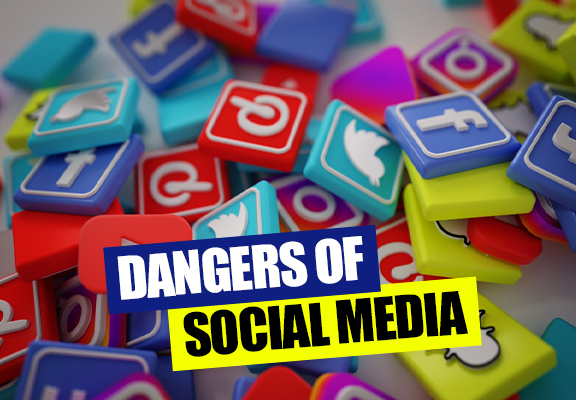
For millions of people, particularly those of the younger generation, social media has become an indispensable component of their day-to-day lives in an age characterized by hyper-connectedness through digital platforms. Despite the fact that social media platforms provide unrivaled opportunities for communication, connection, and self-expression, they also conceal hidden hazards that have the potential to have a significant impact on the mental and emotional well-being of young brains. In this article, we will delve into the less-known dangers that young people face when using social media and investigate different methods that can be utilized to successfully navigate these treacherous seas.
Negative Impact on Mental Health
The possibility that social media could have a detrimental effect on mental health is among the most important risks that young people face from using these platforms. There is an association between excessive use of social media and increased rates of sadness, anxiety, and loneliness among adolescents, according to studies that have been conducted. It is possible to experience emotions of inadequacy and low self-esteem as a result of continual comparison to curated and idealized representations of the lives of other people. This can exacerbate preexisting mental health difficulties and contribute to a loss of general well-being.
Cyberbullying and online harassment
There is a predominance of cyberbullying and online harassment, which is another hidden threat that is associated with social media. Digital communication platforms’ anonymity and perceived distance may give people the confidence to engage in harmful behavior, such as sending abusive messages, threats, and rumors to vulnerable young users while they are using these platforms. The victims of cyberbullying may experience catastrophic results, including social isolation, difficulties in their academic pursuits, and even thoughts of suicide because of the abuse.

Exposure to Inappropriate Content
It is possible for young users of social media to be exposed to content that is improper or harmful due to the fact that social media platforms are not filtered. This content may include sexual imagery, violent films, and extreme ideas. There is still the possibility that dangerous content will make its way onto users’ feeds, despite the fact that platform providers have taken steps to implement content moderation and age restrictions. This poses a threat to the brains of impressionable young people and may cause them to become desensitized to the problems and repercussions that exist in the real world.
Addiction and obsessive behaviors
Using algorithms and features that drive users to spend increasing amounts of time online, social media platforms are meant to be addictive. This is accomplished by adopting several techniques. For young minds, this constant exposure to digital stimuli can lead to addictive behaviors as well as a fixation with social validation and approval. An excessive amount of time spent on social media can cause disruptions in sleep cycles, decrease cognitive function, and interfere with real-life relationships, which can ultimately lead to a cycle of reliance and withdrawal.

Privacy and Data Security Risks
Users of social media sites are subject to the collection of huge amounts of personal data, which may include their browsing patterns, geographical information, and interactions with other users. It is possible that young people, who may not completely comprehend the ramifications of sharing personal information online, are exposed to severe dangers to their privacy and data security as a result of this development. The implications of having one’s privacy violated can be far-reaching and long-lasting. These effects can include identity theft and internet fraud, as well as the illegal sharing of private images and videos taken by the individual.
How dangerous can social media be?
Even if social media is an effective tool for connecting people and facilitating communication, it also has risks that can have a negative impact on people, especially young users. Constant exposure to carefully chosen and frequently exaggerated depictions of other people’s lives can exacerbate feelings of inferiority, which can lower self-esteem and negatively impact mental health. Furthermore, the anonymity provided by digital platforms might encourage people to participate in online harassment and cyberbullying, which feeds a vicious cycle of cruel behavior. Social media’s compulsive nature, with its never-ending stream of updates and material, can cause sleep disorders, cognitive decline, and obsessive behaviors. Furthermore, exposing personal information carelessly on social media can put users’ privacy and data security at risk, making them more susceptible to identity theft, online fraud, and abuse. All things considered, the risks associated with social media emphasize how critical it is to advance digital literacy, encourage safe practices when using the internet, and put in place efficient measures to keep people secure.

Furthermore, despite the fact that social media platforms provide a plethora of options for self-expression, creativity, and connection, they also conceal hidden dangers that can pose significant risks to the brains of young people. The dangers of social media make it necessary to pay close attention to them and take preventative steps in order to reduce the amount of harm they cause. These dangers include the negative influence on mental health, the prevalence of cyberbullying, and addiction. Helping young people navigate the complicated terrain of social media in a safe and responsible manner can be accomplished by parents, educators, and legislators through the promotion of open communication, the promotion of digital literacy, and the setting of healthy limits.






